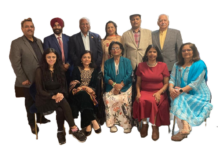Vidya Sethuraman
India Post News Service
The United States is facing an uptick and change in the border flows of people seeking a better life, and instead of addressing it with comprehensive and long-term solutions, there’s yet another series of proposals meant to “harden” policies and “close” the borders.
EMS panelists on Jan 26 delved into the current proposals, the political consequences of another anti-immigrant cycle, the local response to the arrival of high numbers of asylum seekers, and some of the long-term problems with the immigration system.
Angela Kelley, Chief Advisor, Policy and Partnerships for the American Immigration Lawyers Association (AILA) and the American Immigration Council (AIC) said immigration has changed a lot in the past 30 years, especially in terms of numbers.
She pointed out that for people from Afghanistan, Ukraine, Cuba, Haiti, Nicaragua, Venezuela and other countries, they can enter the United States but will not receive a green card, only a work authorization, and they will not be prioritized for deportation unless they commit a crime.
In the past, 4,000 people was a very unimaginable number, but now, more than 10,000 people are eager to enter the United States every day. In the face of such rapidly growing numbers, it is difficult for the government to deal with various issues such as resources, infrastructure, and management personnel.
Vanessa Cardenas, Executive Director of America’s Voice, a Washington DC-based non-profit advocating for immigrant rights mentioned that the Biden administration’s “humanitarian parole” is a transformative policy that creates legal pathways and capabilities for 90% of people. She said that if they had to choose between obtaining a visa or, entering the country illegally, they would choose a legal visa.







